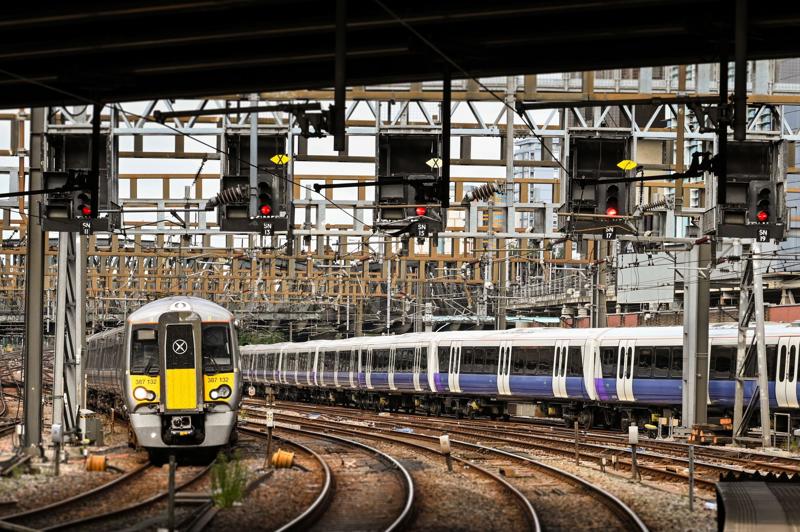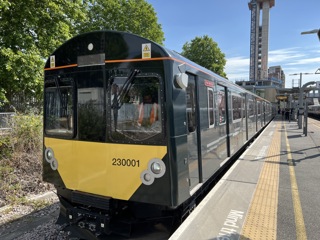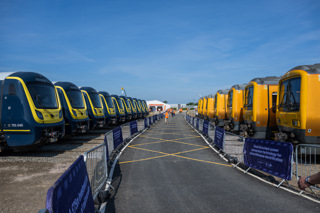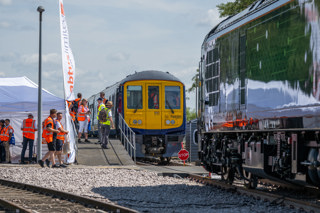
What happens when your train is stuck, and how equipped are operators to deal with the issues that arise? A report has focused on incidents such as the well-documented one at Ladbroke Grove last December. Philip Haigh reports.

What happens when your train is stuck, and how equipped are operators to deal with the issues that arise? A report has focused on incidents such as the well-documented one at Ladbroke Grove last December. Philip Haigh reports.
In this article:
- Why lack of information and in-car services for passengers is dangerous
- TOCs must provide better care for passengers after evacuations
- Operators should stress-test plans and take part in major incident exercises
Uh-oh. I emerged from the Underground station at London King’s Cross the other day to find a dense throng of people filling the main line station’s concourse.
Such a packed concourse is a ready sign of delays and cancellations.
And so it was - some poor soul had been hit by a train somewhere a little north of London.
Knowing this usually removes frustration from waiting passengers, and that was the situation I found at King’s Cross. Hundreds of us waited as Network Rail and the British Transport Police dealt with the situation to reopen lines and allow trains to restart.
While the crowd I was in remained calm and understanding, we didn’t know when our trains might leave or what services might be cancelled. We could sometimes hear a staff member shouting from the gateline, but couldn’t hear what he was saying.
This prompted me to later ask LNER Managing Director David Horne whether some megaphones could be provided.
Staff have them, he replied, but they’ve proved worse than a loud voice.
I suspect the answer is roving microphones tied into the station’s public address system, so let’s hope Network Rail takes the hint (while not forgetting that passengers with poor or no hearing will need visual announcements).
That’s because information remains vital when trains become disrupted. This was made amply clear in a joint report published by the Office of Rail and Road and Transport Focus a week or so after my extended evening at King’s Cross.
The ORR/TF report (compiled by Steer) looks at the problem of stranded trains. Of course, that’s very different from waiting at a major terminus station with all its facilities, but information remains the key to effectively reassuring passengers that they’re being looked after.
And although I’ve just written ‘reassuring’, I really mean ‘controlling’. Because just about the worst thing that can happen when trains become stranded is that passengers take matters into their own hands and leave the train - self-evacuation as the report puts it.
This was the case in the first example examined by ORR and TF. It was the most complex of the four that the two organisations put under their microscope, and it’s the one I’ll concentrate on here.
The case is well-known - not least because Network Rail Chief Executive Andrew Haines was one of the passengers stranded. It happened at Ladbroke Grove, about 1.5 miles west of Paddington station on December 7 2023 (RAIL 999).
Haines later wrote: “I intend to use my own painful experience in committing to improve how we deliver for our customers and support our colleagues, especially when things go wrong. Yesterday evening was not one of our finest moments.”
ORR and TF base their report on interviews with staff and passengers. This approach teases out different aspects and perspectives to an overall situation that was very complicated.
The problem started with damage to overhead line equipment (OLE - the railway’s electrification system), which halted a Great Western Railway service. This saw Network Rail switch off power to all lines, which stranded four Elizabeth line and two Heathrow Express services.
The report records: “On the GWR train and initially on the Heathrow Express services, passengers reported feeling comfortable since the lights and heating were available, whereas those on the Elizabeth line experienced the opposite.”
The report lays out just what that meant: “With no access to air-conditioning, toilets, or charging facilities (and reduced lighting), some stranded passengers started misbehaving and violently trying to force the doors open.
“One passenger noted that there were announcements saying ‘can people stop trying to open the emergency doors to get out (…), can people stop kicking the doors - I know you’re frustrated, but please stop doing that’. This further exacerbated the already stressful and unpleasant atmosphere on the train.”
There was an initial plan to evacuate the GWR service, but it eventually returned to Paddington on diesel power. Evacuees from one of the HEx services were led to Hanwell, with the fire brigade helping them from the train.
For the Elizabeth line passengers, ORR and TF report some confusion over whether the evacuation was official or led by passengers. There seems to have been an official element, with ORR and TF reporting that passengers were led towards Paddington for five to ten minutes, but then turned round and told to head the other way.
Looking back at the incident, communication between the site of the incident and train operator control centres remained challenging. Train operators reported difficulties in understanding the recovery plan and its priorities.
GWR said this might have been easier had it been able to find more staff. However, industrial action was taking place, and it was running a reduced timetable with fewer staff who were approaching the end of their 12-hour shifts.
MTR, which runs the Elizabeth line for Transport for London, found that its 50-page procedure for dealing with stranded trains was too long to be of practical use. And it was the first time staff had used it in anger.
But what happens after passengers have been rescued? By and large in this incident, they were left to their own devices.
Take HEx as an example: “Passengers were reassured via announcements that alternative transport options had been arranged at Hanwell station. They felt disappointed when it turned out they were expected to arrange onward travel on their own.”
Or the 900 aboard the GWR train when it arrived back in Paddington. The report notes: “Onboard, passengers were told there would be a member of staff who would arrange taxis for onward travel. Given that there were over 900 passengers onboard the service, people quickly sensed this arrangement would be unrealistic and felt very anxious.”
There are two passages from the ORR/TF report that summarise the challenge of trains becoming stranded.
The first says: “Every incident is different, and this is particularly the case with evacuation where circumstances are the most difficult to plan for. Train operating companies therefore face significant challenges in planning and executing evacuations which then have an impact on passenger safety and welfare, in particular those with additional needs.”
The second adds: “All operators admitted that organising onward travel is the biggest challenge. It requires a strong and efficient collaboration across the industry, but also with transport providers outside rail. It is highly impacted by the availability of staff, time of day and week, as well as prompt decision making.”
Each operator has their own procedures for dealing with the problem, and they all lean heavily on guidance from the Rail Delivery Group. ORR and TF’s report recommends that this guidance be made stronger by adding emphasis about end-to-end journeys and faster decisions better tailored to the needs of passengers.
The report recommends that plans be reviewed by line-of-route. This will better co-ordinate incidents such as the one at Ladbroke Grove that involved three operators. It recommends that operators stress test plans and take part in major incident exercises.
I can see the value of exercises, although they will themselves take some organising. And I feel for the manager who turns over a card which reads: “It’s 2200 on a winter’s evening. Please organise taxis for 900 long-distance passengers. The passengers will arrive in 15 minutes.”
This is real railway operating. It’s hard.
And it’s becoming more common. Steer dug out the figures to find that between October 30 2023 and January 8 2024, 178 train became stranded. That’s an average of more than one incident per day.
I should say that the period included six named storms, and that we have a rail network which is susceptible to extreme weather.
Evacuations took place on 20 of those 178 trains - six were started by passengers and 14 were planned and supervised, with nine of them train-to-train and five from train to ballast and then station.
None of the four examples that Steer covered for ORR and TF took place on the third-rail network. Such incidents can quickly become very complicated, because the risk of passengers self-evacuating means that electrical power to trains must be switched off.
This was the case at Lewisham in 2018, which the Rail Accident Investigation Branch looked into. It found that passengers had likely been exposed to live third-rail equipment. Trains sat stranded for four and a half hours.
There’s a challenge in recognising that stranded train are an everyday event, yet they can quickly become serious incidents - particularly where OLE is involved.
Which means that if you want to prevent strandings, then OLE reliability and resilience is the place to start.
To read the rest of this column and Haigh's column every fortnight, Subscribe today and never miss an issue of RAIL. With a Print + Digital subscription, you’ll get each issue delivered to your door for FREE (UK only). Plus, enjoy an exclusive monthly e-newsletter from the Editor, rewards, discounts and prizes, AND full access to the latest and previous issues via the app.
Login to continue reading
Or register with RAIL to keep up-to-date with the latest news, insight and opinion.


















Login to comment
Comments
No comments have been made yet.